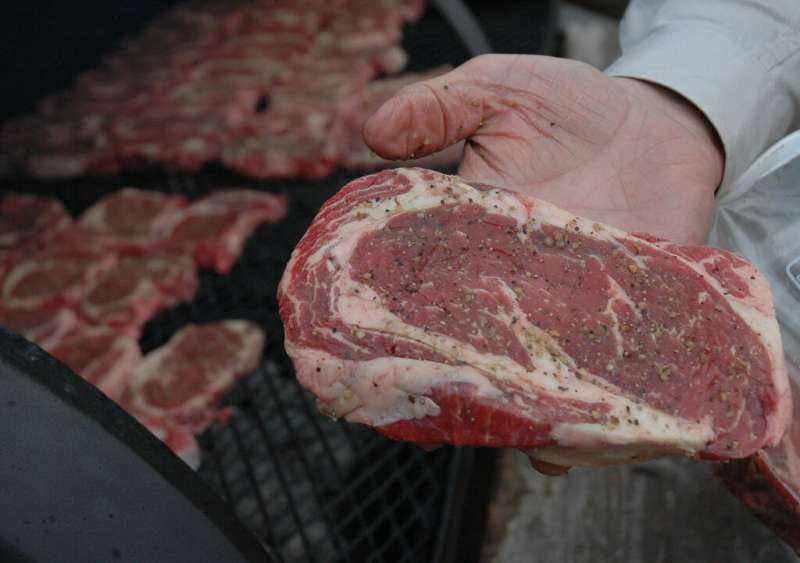Raw meat should be stored separately from other picnic foods. Credit: Texas A&M AgriLife Extension Service
July is National Picnic Month and Texas A&M AgriLife Extension Service experts have some advice on how to make a picnic safer by protecting against foodborne bacteria.
Food safety begins with ensuring hands, surfaces and utensils are all clean, said Dr. Jenna Anding, AgriLife Extension associate head, nutrition and food science department, College Station.
"If there's no running water, use a water jug, soap and paper towels or moist disposable towelettes to clean your hands," she said. "Make sure all utensils and platters have been adequately cleaned and are kept separate from food or other items to avoid possible cross-contamination."
Anding also noted the same plate and utensils used for preparing raw food should not be used for serving cooked food.
"Use a clean plate and utensil set for cooked food," she said. "This will reduce the risk of bacterial transfer."
Anding also said separating foods and using coolers can assist in ensuring a safe picnic.
"Keep raw meat, poultry and seafood securely wrapped and stored separately in a cooler, away from other foods," she said. "This keeps their juices from contaminating prepared or cooked foods as well as foods that are expected to be eaten raw, such as fruits and vegetables. Also, don't partially cook meats with plans to finish cooking them at the picnic. Cook them fully and thoroughly either at home or at the picnic site."
She also suggested putting beverages in one cooler and perishable foods in another.
"That way, you don't have to frequently reopen the same cooler your food is in to get a drink," Anding said. "Opening the cooler fewer times will expose perishable foods less to warm outdoor air temperatures."
Rebecca Dittmar, AgriLife Extension program specialist in nutrition and food science, Kerrville, said keeping food at the proper temperature is vital to helping prevent the growth of foodborne bacteria.
"For a picnic, it's important to keep cold foods cold and hot foods hot," Dittmar said. "Cold, perishable foods should be kept at 40 degrees or lower until serving time. And hot food should be kept hot, which is to say 140 degrees or warmer.
"Harmful bacteria grow most rapidly at temperatures between 40 and 140 degrees. We call that the 'danger zone' for bacterial growth."
She said cold foods in individual serving dishes can be placed directly on ice, or in a shallow container set in a pan filled with ice. Drain off water as ice melts and replace ice frequently.
"With both cold and hot foods, the general rule for food safety is to not let them sit out for more than two hours—or one hour if the outside temperature is above 90 degrees," Dittmar said. "If food is left out longer, the safest choice is just to throw it out."
She also suggested unpacking the cooler as soon as possible after returning home.
"Try to remember to unpack the cooler as soon as you get back," she said. "Refrigerate any leftover meats and salads that have remained sufficiently cold while in the cooler, and discard any foods that have become too warm."
Provided by Texas A&M University
























